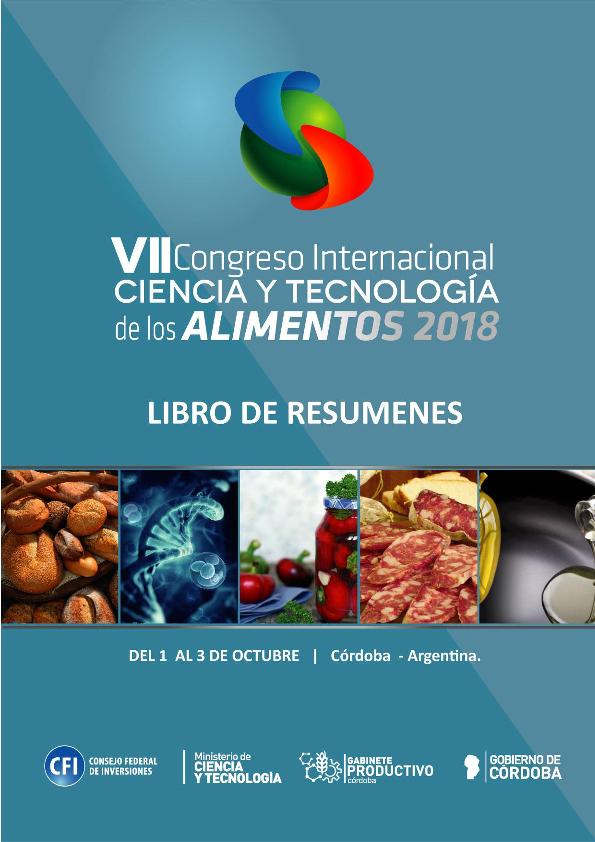Evento
Protein hydrolysis, peptide fractionation and antiradical activity of peptides produced from extruded and non extruded quinoa (Chenopodium quinoa wild) grains
Tipo del evento:
Congreso
Nombre del evento:
VII Congreso Internacional Ciencia y Tecnología de los Alimentos
Fecha del evento:
01/10/2018
Institución Organizadora:
Ministerio de Ciencia y Tecnología de la provincia de Córdoba;
Título del Libro:
VII Congreso Internacional Ciencia y Tecnología de los Alimentos 2018 : libro de resúmenes
Editorial:
Ministerio de Ciencia y Tecnología de la provincia de Córdoba
ISBN:
978-987-45380-93
Idioma:
Inglés
Clasificación temática:
Resumen
The objective of this work was to evaluate the effect of extrusion of quinoa seeds on the protein hydrolysis and radical scavenging activity of different peptide fractions. Quinoa protein isolates were obtained from defatted flour of extruded and non-extruded grains. Isolates were obtained by alkaline solubilisation and acid precipitation, followed by centrifugation and drying in a flux oven at 30ºC until constant weight. Dried isolates were powdered and protein content was determined. Quinoa protein hydrolysis was performed at 50ºC and pH 9.0 on 10mg/mL protein suspension. Alcalase was added to the suspension in ratio enzyme-substrate 1:10 and pH was corrected to 9.0 with NaOH. Reaction dynamic was monitored over 30 minutes and stopped by thermal inactivation of enzyme (80ºC for 10 min). The hydrolysis degree (HD) was calculated using pH-stat method. Then, the slurry was cooled down to room temperature and centrifuged (10 min, 5000g). Polypeptides and peptides in the supernatant were fractionated by ultrafiltration. Fractions of >10; 10-5; 5-3 and <3 kDa were recovered and analysed. Measurements of soluble protein (Bradford method), total nitrogen content (TNC) (Kjeldahl´s determination), 10% TCA soluble peptides, α-amino groups (TNBS reaction) and radical scavenging activity (using 2,2-diphenyl-1-picrylhydrazylradical) were tested for each fraction. Protein isolates from extruded and non-extruded quinoa seeds showed protein content of 55.35 and 64.93 %, respectively. Over the hydrolysis process, the HD was similar to both slurries and reached 27% after 30 min. At this point, peptide separation of treated and untreated seeds, evidenced a higher content of nitrogen for the <3 kDa fraction (50.0 and 50.54% of TNC). Fraction of 10-5 kDa was the second one having an important content of nitrogen (29.67 %). DPPH radical scavenging activity of peptide fractions from extruded grains showed 20% of antiradical activity (10% more than non-extruded quinoa grains). Fraction of 5-3 kDa was the poorest in content of soluble protein, TNC, α-amino groups and low radical activity. Evidently, extrusion had a notable effect on the production of peptides of <3 kDa. Although it was not evidenced in the total HD after 30 min, the type of peptides seemed different since DPPH assay denoted an increase in the antiradical activity for the peptide fraction from extruded grains, also considering the same amount of nitrogen and amino groups to both fractions of treated and un-treated grains. In conclusion, the hydrolysis performed produced a <3 kDa fraction rich in peptides and extrusion improved its antiradical activity.
Palabras clave:
Quinoa
,
extrusion
,
hydrolysis
,
peptides
Archivos asociados
Licencia
Identificadores
Colecciones
Eventos(CIITED)
Eventos de CENTRO INTERDISCIPLINARIO DE INVESTIGACIONES EN TECNOLOGIAS Y DESARROLLO SOCIAL PARA EL NOA
Eventos de CENTRO INTERDISCIPLINARIO DE INVESTIGACIONES EN TECNOLOGIAS Y DESARROLLO SOCIAL PARA EL NOA
Citación
Protein hydrolysis, peptide fractionation and antiradical activity of peptides produced from extruded and non extruded quinoa (Chenopodium quinoa wild) grains; VII Congreso Internacional Ciencia y Tecnología de los Alimentos; Cordoba; Argentina; 2018; 528-529
Compartir




